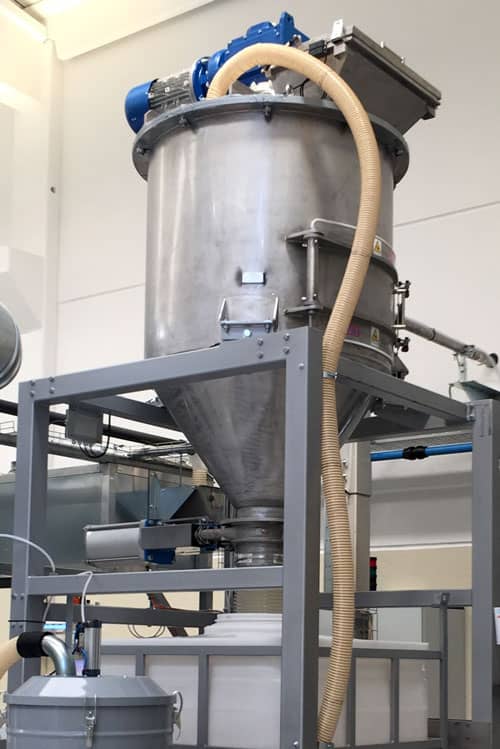
Direct charge blender loading
Easy cleaning solution - Industry 4.0 ready
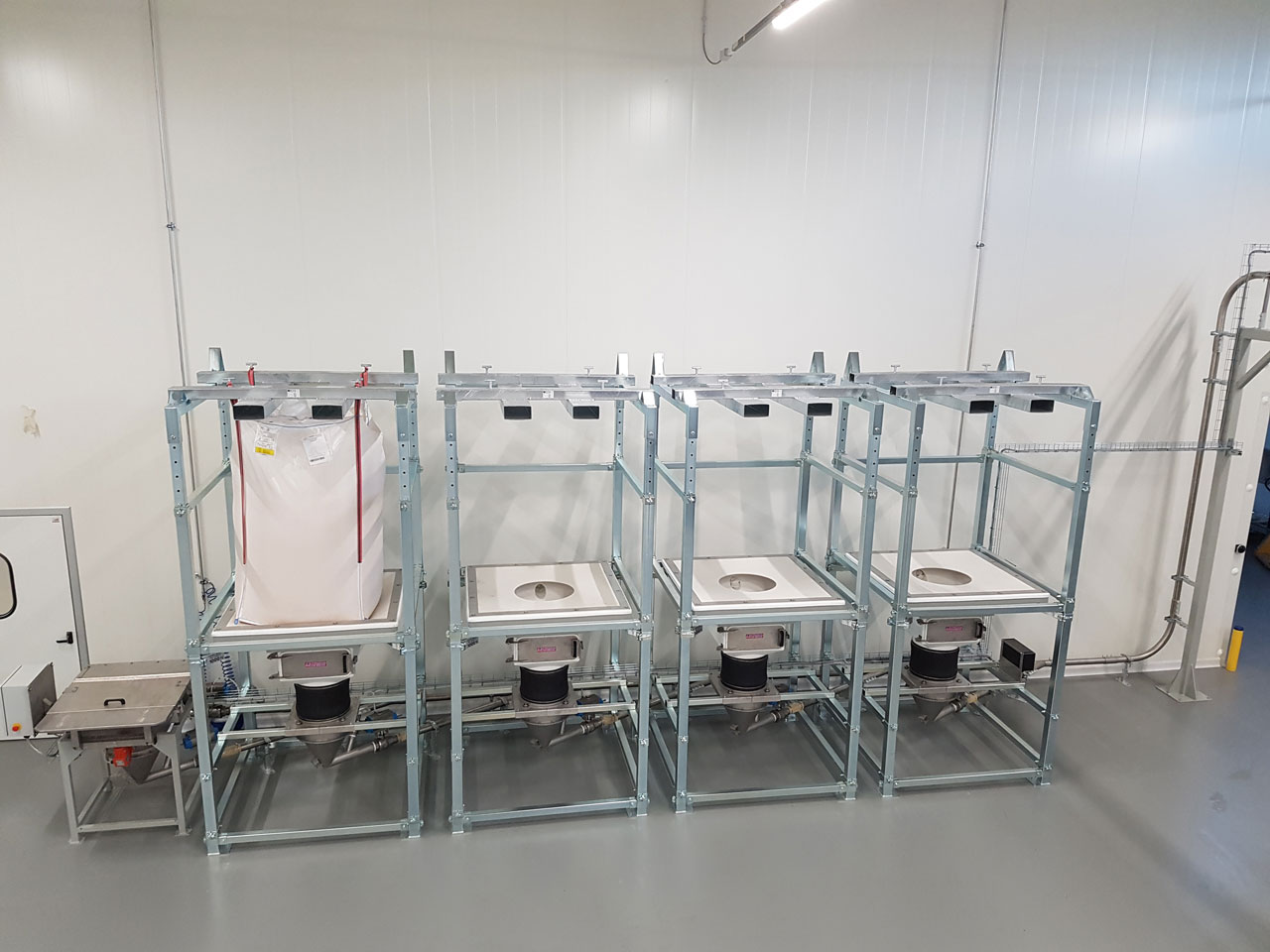

Easy cleaning solution - Industry 4.0 ready

Gimat designs and manufactures versatile direct charge blender loading solutions, for the handling and mixing of bulk materials. The engineered system comprises:
small batches of different mixtures
automate the process to track it
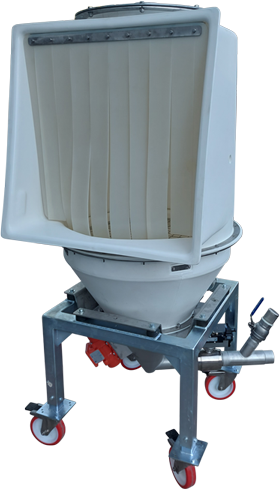
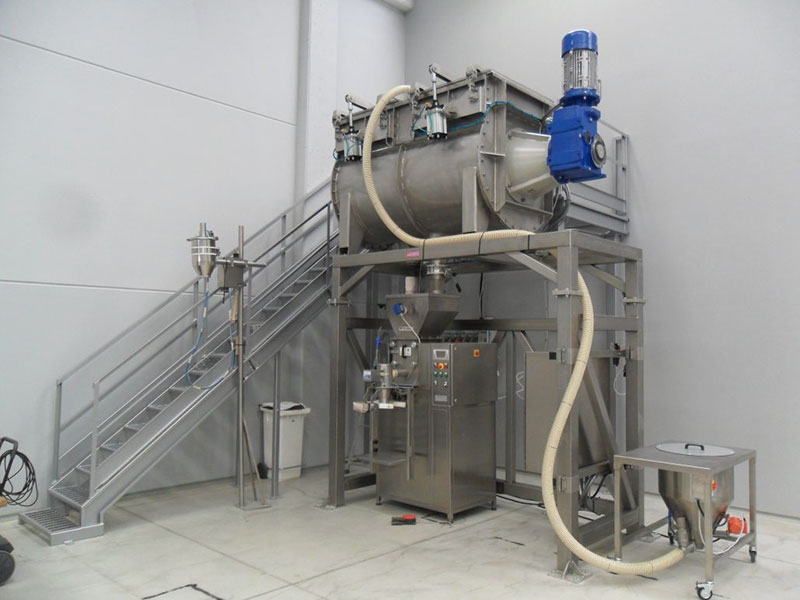
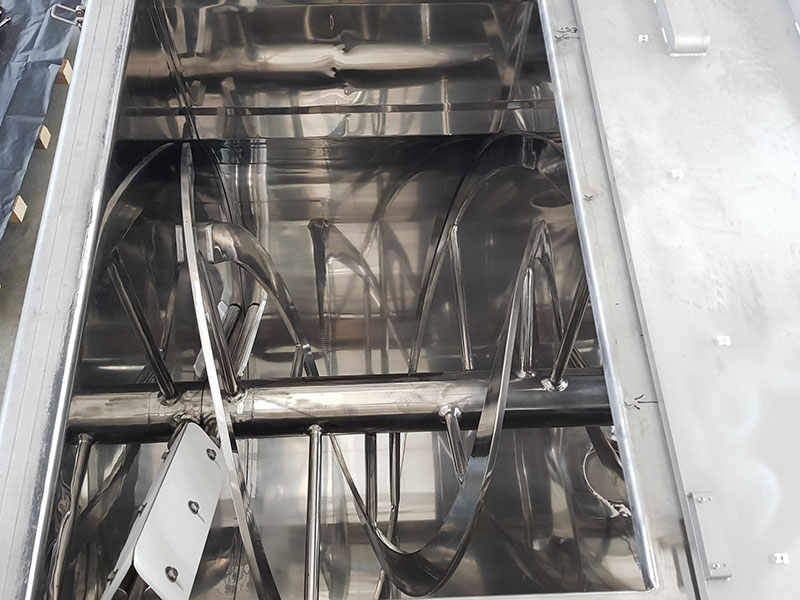
Using a direct loading system significantly enhances efficiency by employing the blender to create a vacuum that sucks the material from ground level. The blender vessel is the vacuum discharge receiver of the powdered material charged to it.
This solution boosts productivity by reducing convey times, as the system operates on a continuous transfer cycle. Using dilute phase vacuum conveying, the bulk materials can be conveyed to ribbon blenders at rates up to 4000 kg/hour.
Once ingredients are blended, material is directly discharged by gravity into post-blender container or buffer hopper. Alternatively, the mix is conveyed without de-mixing using the easy cleaning Gimat flexible screw conveyors to the next step of the process.
This approach reduces spillage and contamination, while also safeguarding the operator: the bags are handled on the ground floor and the operator using manual bag emptying station with suction hood, is not exposed to dusty material or harmful substances.
A direct charge blender loading minimises also the quantity of moving components. All the contact surface material is either SS304 or 316L stainless steel and non-contact surface area in SS304, in accordance with food-grade and 1935/2004 MOCA requirements.
The mixer can be placed on load cells, and with the appropriate software, the individual components to be dosed in the quantities predetermined by the recipe can be automatically dosed to the blender. For a process with a greater degree of automation, this system can be combined with a FIBC bulk bag discharger for materials that are not supplied in 10-25 kgs sacks.
If you manage a variety of products with liquid addition, we usually suggest our vertical ribbon mixer with double side chopper.The function of the choppers is to intensify the mix and allow the breaking of lumps present in the powder created by liquids.
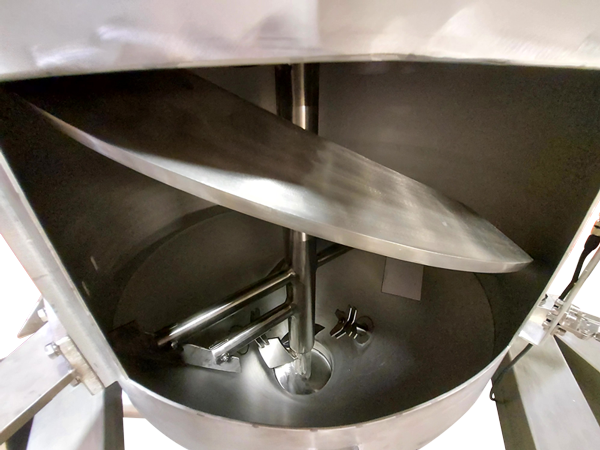
Depending on the applications and cleaning frequency, the filter can be placed above the mixer or on the ground.
The filter placed above the mixer prevents the retention and wastage of powder, especially if there are micro-components that could otherwise end up in the ground filtering unit and compromise the quality of the mix.
The powder retained by the filter above the mixer returns to the mixer by gravity, when the filter is cleaned with the reverse air cleaning integrated into the filter itself. This solution is ideal when making large batches of the same type of mix.
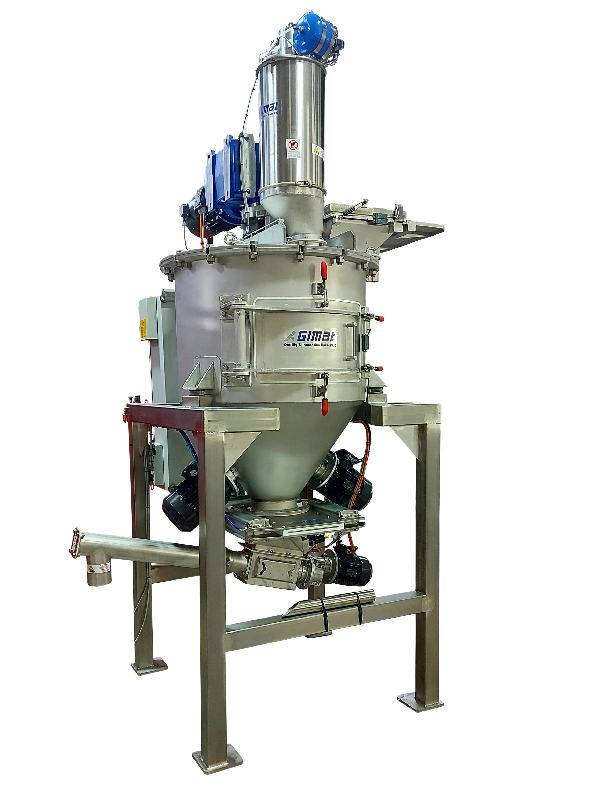
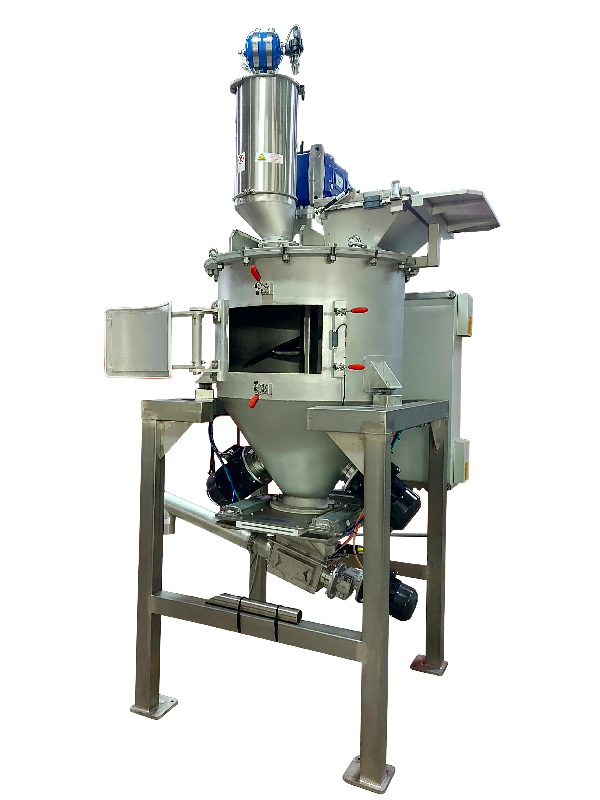
The filter placed on the ground simplifies cleaning, as the powder collected in the ground bin does not create contamination and doesn't need cleaning from different mixtures.
The floor-based filter solution is designed to eliminate any dust produced during the upstream processing of the product to be mixed. This is the typical case of cereals or granules and flakes of plastic materials. In the case of cereals, for example, the filter placed on the ground allows you to obtain a better mixture, to make the puffing machines work better and to obtain a better quality finished product.
If you are processing fine powders, you must consider that using a filter on the ground, small percentage points of the powder may be wasted. This is acceptable when you have, for example, 3 macro-components, with percentages of 20%, 50%, and 30%. However, if you work with mixtures containing components with low percentages (for example, 80%, 5%, 3%, 2%, 10%), this solution could be not suitable and needs validation test, because there is a risk that products with low percentages (2-3%) might be partially lost, thereby compromising the quality of the mixture. A possible solution to avoid this problem can be, where possible, do a coarse premix of small percentage into larger amount or manual feeding of smaller amount.